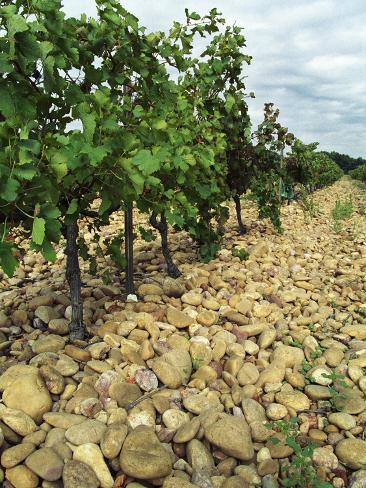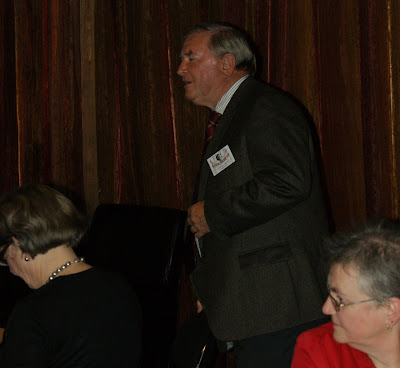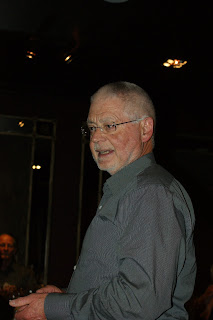16 June 2013 Meeting at Museum Art Hotel, Wellington
Quotes from Winemaster Stewart:
" Wine rejoices the heart of man and joy is the mother of all virtues”.- Goethe, 1771
"To make a great wine one needs a madman to grow the vine, a wise man to watch over it, a lucid poet to make the wine, and a lover to drink it!" – Salvador Dali
“I can certainly see that you know your wine. Most of the guests who stay here wouldn’t know the difference between Bordeaux and Claret." - Basil Fawlty, “Fawlty Towers”
"What contemptible scoundrel stole the cork from my lunch?"
- W.C.Fields
WINE 1 – on Arrival
Castillo Perelada Brut Reserva Cava NV - RRP$19.90
Our Cost $14.90
( from Glengarry Wines 11.5% Alc/Vol)
Coming from the Penedes region of Spain in the South of the Principality of Catelonia, this is a serious wine made in the traditional cava method.

The smoky minerality of the citrus fruit lends an aristocracy that many far more expensive sparkling wines seem unable to conjure up. Slightly floral, deliciously dry, it’s remarkable value.
The varieties are Macabeo (40%), Xarel-lo (30%), and Parellada (30%).
WINE 2 - with Duo de saumon d’Ora King (beetroot cured Ora King salmon with cauliflower panacotta and hibiscus tea syrup Ora King salmon sashimi - the chef’s signature dish.)
Dom Thibert Macon-Prisse 07 Chardonnay– RRP$41 Our Cost $27 (from Scenic Cellars) 13% Alc/Vol
Made from 100% Chardonnay, this is an incredibly high-quality Macon-Village grown in the heart of the appellation at Fuissé, Southern Burgundy.

Domaine Thibert Chardonnay
Christophe Thibert is an over-achiever who is quality driven; very low yields, only older vines, green harvesting including final harvesting by hand. This wine exhibits a textbook nose of ripe pears, apples and floral notes backed by a hint of toasty oak. The palate is ripe, supple and done with an elegance usually found only in much more expensive wines. Dry, yet juicy, with a long finish
WINE 3 - with Joue de boeuf a la facon bourguignonne (braised beef cheek bourguignon-style with truffle and parsley mash, baby turnip and braising jus)
Mont-Redon 09 Chateauneuf-du-Pape Rouge – RRP$78.50 Our Cost $44 (from Glengarry) 14.5% Alc/Vol
2009 was an exceptional year in the Rhone Valley according to those who know. Tanzer, one of the European wine judges gave this wine 92/100 and wrote “Ruby-red. Red and dark berries on the fragrant, exotically perfumed nose. Ripe and broad on entry, then tighter in the mid-palate, displaying juicy raspberry and blackberry flavours that are given depth by a suggestion of candied licorice. Gains energy with air and finishes long with excellent clarity and incisive spice notes”

Mont-Redon is a Southern Rhone producer, situated just north of Avignon, where the soil gives way to the large stones for which the region is famous. Chateauneuf-du-Pape is one of the great wines of France, the name of the village where it is produced having been sufficient to give it its appellation. Unlike most French wines, Chateauneuf-du-Pape is made from several grape varieties. The owners are Didier Fabre and Jean Abeille and Mont-Redon the winery, has been in their families for four generations.

The owners are Didier Fabre and Jean Abeille. The philosophy is one which places the expression of the estate's extraordinary "terroir" first in wines vinified to exhibit deep, clean, intense fruit, ripe, balanced tannins and approachability without sacrifice of longevity. Chateau Mont-Redon's superb "terroir," constant pursuit of quality and enviable reputation for excellence rank it among the great crus of Chateauneuf-du-Pape.

Chateau Mont-Redon
Châteauneuf-du-Pape is an Appellation d'origine contrôlée (AOC) located around the village of Châteauneuf-du-Pape in the Rhône wine regioe. It is one of the most renowned appellations of the southern part of the Rhône Valley. Vineyards are located around Châteauneuf-du-Pape and in the neighboring villages Bédarrides, Courthézon and Sorgues between Avignon and Orange and cover around 7,900 acres.More wine is made in this one area of southern Rhône than in the entirety of the northern Rhône region.
Châteauneuf-du-Pape roughly translates to "The Pope's new castle" and, indeed, the history of this appellation is firmly entwined with papal history. In 1308, Pope Clement V, former Archbishop of Bordeaux, relocated the papacy to the town of Avignon.
Clement V and subsequent "Avignon Popes" were said to be great lovers of Burgundy wines and did much to promote it during the seventy-year duration of the Avignon Papacy. Under John XXII, the wines of this area came to be known as "Vin du Pape", this term later to become Châteauneuf-du-Pape. John XXII is also responsible for erecting the famous castle which stands as a symbol for the appellation.
In the early 20th century, Châteauneuf-du-Pape was plagued by wine fraud; various rules for the production of Châteauneuf-du-Pape, drawn up and promulgated in 1923, were the first Appellation Contrôlée rules in France, and provided the prototype for subsequent AOC rules. The original AOC rules allowed 10 varieties, and were amended to 13 in 1936, and 18 in 2009. Baron Pierre le Roy of Château Fortia was the principal architect of these regulations, which set the minimum alcohol level of the wines and set limits on yields as well as which types of grapes could be grown in which area. Another one of the Baron's requirements was that no vineyards could be planted on land that wasn't arid enough to support plantings of both lavender and thyme.
The producers of Châteauneuf-du-Pape have historically been known to be fiercely protective of their vineyard properties which is said to have led to the 1954 passing of a municipal decree in the village of Châteauneuf-du-Pape that banned the overhead flying, landing or taking off of flying saucers in the commune. As of 2007, this law has yet to be repealed.
Climate and geography
The area covers 3200 hectares of land with at least three distinct types of soil or terroirs. In the north and north-east the famous galets roulés, round rocks or pebbles covering the clay soil. The rocks are famous for retaining the heat from the plentiful sun, some 2800 hours a year, releasing it at night, ripening the grapes faster than in the eastern part of the appellation, where the soil is mostly sand, as well as to the south where the soil is more gritty. The powerful mistral wind carries away the moisture, intensifying the dry climate.
Terroir
The characteristic terroir of Châteauneuf-du-Pape comes from a layer of stones called galets ("pebbles"). The rocks are typically quartzite and remnants of Alpine glaciers that have been smoothed over millennia by the Rhône River. The stone retains heat during the day and releases it at night which can have an effect of hastening the ripening of grapes. The stones can also serve as a protective layer to help retain moisture in the soil during the dry summer months.

Grape varieties
 Red varieties allowed are Cinsaut, Counoise, Grenache noir, Mourvèdre, Muscardin, Piquepoul noir, Syrah, Terret noir, and Vaccarèse (Brun Argenté). White and pink varieties are Bourboulenc, Clairette blanche, Clairette rose, Grenache blanc, Grenache gris, Picardan, Piquepoul blanc, Piquepoul gris, and Roussanne.(The varieties not specifically mentioned before 2009 are Clairette rose, Grenache gris and Piquepoul gris.)
Red varieties allowed are Cinsaut, Counoise, Grenache noir, Mourvèdre, Muscardin, Piquepoul noir, Syrah, Terret noir, and Vaccarèse (Brun Argenté). White and pink varieties are Bourboulenc, Clairette blanche, Clairette rose, Grenache blanc, Grenache gris, Picardan, Piquepoul blanc, Piquepoul gris, and Roussanne.(The varieties not specifically mentioned before 2009 are Clairette rose, Grenache gris and Piquepoul gris.)There are no restrictions as to the proportion of grape varieties to be used, and unlike for many other appellations, the allowed grape varieties are not differentiated into principal varieties and accessory varieties.Thus, it is theoretically possible to produce varietal Châteauneuf-du-Pape from any of the eighteen allowed varieties. In reality, most Châteauneuf-du-Pape wines are blends dominated by Grenache.
Only one of every 16 bottles produced in the region is white wine.
It is common to grow the vines as gobelets (bushvine), and this is the only vine training system allowed for the first four red varieties. Yields are restricted to two tons per acre.
Red wines
In most red Châteauneuf-du-Pape, Grenache noir is the most common variety, although some producers use a higher proportion of Mourvèdre. Grenache produces a sweet juice that can have almost a jam-like consistency when very ripe. Syrah is typically blended to provide color and spice, while Mourvèdre can add elegance and structure to the wine.Some estates produce varietal (100%) Grenache noir, while a few producers insist on using at least a token amount of all thirteen permitted varieties in their blend. The only estate to grow all thirteen varieties and use them consistently in a blend is Château de Beaucastel.
Châteauneuf-du-Pape red wines are often described as earthy with gamy flavors that have hints of tar and leather. The wines are considered tough and tannic in their youth but maintain their rich spiciness as they age.The wines often exhibit aromas of dried herbs common in Provence under the name of garrigue. Châteauneuf-du-Pape dominated by Mourvèdre tend to be higher in tannin and requiring longer cellaring before being approachable.
WINE 4 - with Joue de boeuf a la facon bourguignonne (braised beef cheek bourguignon-style with truffle and parsley mash, baby turnip and braising jus
Tyrrells Vat 9 09 Hunter Shiraz –RRP$82. Our Cost $51.50 (from Advintage) 13% Alc/Vol
Winner of 5 trophies and 2 Gold Medals, Robert Parker gives this 97/100.
The winery writes: "Bright purple in colour, the wine has a fresh nose of berries and violets with a subtle oak lift. The palate is medium weight with the immediate fruit sweetness being the core of the palate structure. The oak fills out the mid palate which is extended with a fine, clean acid structure. A creamy, soft textured wine which is a great example of modern Hunter shiraz."
Established in 1858 by English immigrant Edward Tyrrell, Tyrrell’s Wines is one of Australia’s pre-eminent family owned wine companies with vineyards extending from their historic home in the Hunter Valley to the Limestone Coast (SA) and Heathcote (VIC).

Bruce Tyrrell
WINE 5
Mini tarte Tatin (mini apple tart Tatin with toffee and calvados sauce and vanilla ice cream
Fromm 2010 Late Harvest Gewurztraminer – RRP$27 for 375ml. Our Cost $24 (from vineyard) 12.5% Alc/Vol
Ripe 100% Gewürztraminer characteristics dominate the aromas of this wine with classic rose petal, lychee, ginger and elderflower.
Being botrytis free allows the wine to show great purity of its fruit and style. It is dense, concentrated and rich with ample acid to cut the residual sweetness. Classic florals,Turkish delight and spice linger on a very clean, intense finish. A particularly refreshing dessert wine.











































